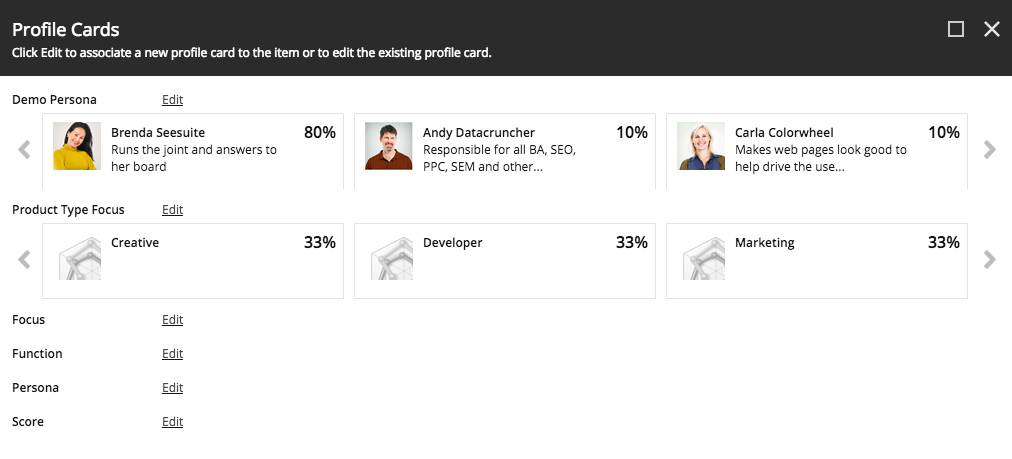If you are setting up behavioral personalization in Sitecore, there are a few subtle controls that can make a dramatic difference in both how your profiles are tracked, and how your content marketers can assign cards to pages. One aspect that came into play as of 8.1 is Decay Rate, which I covered in a previous post.
Another, that has been around a stitch longer, has to do with defining the mathematical model around your behavioral profiles, and the control that is made available to content marketers when applying them. As per usual, I need to make a few assumptions here:
- You have a personalization strategy in place
- You are comfortable with creating a Profile, Profile Keys, Profile Cards and Pattern Cards
- You have at least one initial set of Personas or similar Profile
This being the case, let’s start with an often-missed control setting on the Profile.

fig. 1
Select the top level of a Profile – meaning the Profile container that holds all of your keys, profile cards and pattern cards. (fig. 1) In the content tab, just above Decay Rate in the Data Field section, there is a dropdown for “Type.” (fig 2.)

fig. 2
Type drives the math around how the “radar” pattern is defined. This becomes important if you have a page or asset where its content applies to more than one Profile Card. More often than not pages and assets reach across different Personas (as a profile card type example) and applying just one Persona to that page would not accurately reflect user behavior. Allowing a content marketer the ability to apply multiple Persona Profile Cards, puts more control in their hands to define clearer behavior based on content. In that case, it becomes necessary to define how Sitecore calculates the pattern when more than one is selected. Are the patterns additive (SUM), Averaged, or represented in Percentages? In most cases, I recommend selecting Percentage as it allows for the most flexibility during setup and is simply an easier model to visualize and apply. (fig. 3)

fig. 3
Before your content marketer can take advantage of this type of control you have to provide them with the ability to use more than one card. By default they will only be able to select one Profile Card per high-level Profile (category) and the interface is simplified. (fig. 4)

fig. 4
fig. 5
By selecting the Profile Card top level folder (fig. 5) and clicking on the Content Tab, you will see an Authoring Selection drop down with Single, Multiple and Multiple with Percentages. (fig. 6)

fig. 6
Switching to either of the Multiple options opens up a more robust tool for defining behavior. (fig. 7 & fig. 8)

fig. 7 – no percentage control

fig. 8 – with percentage control
With Multiple and no Percentage control Sitecore will automatically distribute the weight of the pattern across the selected Profile Cards. With Multiple with Percentage, the content marketer will be able to weight the cards as they see fit, based on the page content. This can be different for each high-level Profile type. (fig. 9)

fig. 9

fig. 10
I recommend allowing the flexibility to define the percentages manually and encourage authors dig and pay attention to the pattern as the different sliders are adjusted. Sitecore is even kind enough to take care of your math should it not equal 100%. (fig. 10)
With these subtle but important settings in place, you and your team can focus on the importance of content and how it is represented in your behavioral patterns. Often times a byproduct of this process comes the revelation that there are content gaps, requiring the need for more versions. Given that, I suggest keeping things as simple as possible when starting, and ramp up over time.
Please reach out with any comments or questions and please follow me on twitter: @Sitecordial
